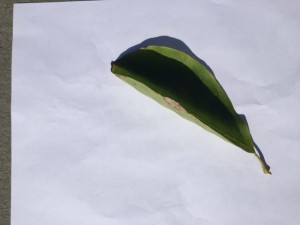During the hike, my ears were keenly searching for nonhuman sounds such as a leaf rustling, a bird chirping, the ground being disturbed. Occasionally my vigilance was rewarded as a squirrel or the occasional dog on the trail made their presence known to me, but I was hoping for more.
The ravens racing amongst the trees, dancing with one another and singing to their heart’s content, gave me the feeling that I was immersed in land that was not my own, not for animals, but for all of us, on equal footing. The benefits of the land for the ravens were the same as those for me, we shared an appreciation for the habitat, as I was awed by the views, and they were able to call it their home. But still, I was hoping for more sound. I was surprised by where we found it.
Half asleep in the back of the van, I was jolted to being woken up at a rest stop on the way back to campus. Some people were getting drinks, others using the restroom, and as such, I decided to stretch my legs before we made the rest of the trek back to Easton. Outside of the rest stop a lone tree stood; it was obviously placed there for decoration’s purpose, and there were no other trees within sixty yards of it, as highway and parking lot surrounded the complex. As I walked by the tree, I could not believe my ears.
Countless birds were sitting in the tree, squawking away, talking to one another about prospects for food in the lot, or dropped items that could make for a good snack. More birds than I had encountered on the entire hike were sitting in this one tree in the parking lot of a rest stop, and it made me sad.
I wanted to tell them, “Go to the Ledges! You will be happier there”. I wanted them to see what I had seen that day, and not where we happened to stop in the car for a break. I wanted them to call home where the ravens call home, but unfortunately this was not the case. Funny the way some things work out, as all the birds were far from nature, and the contrast throughout the day was striking.

